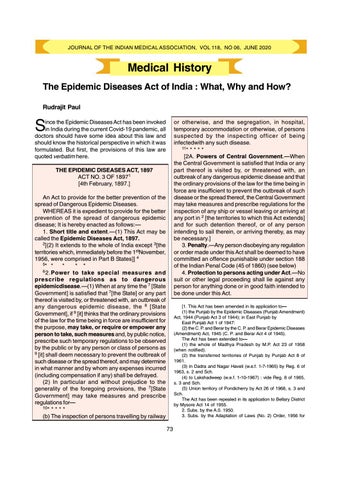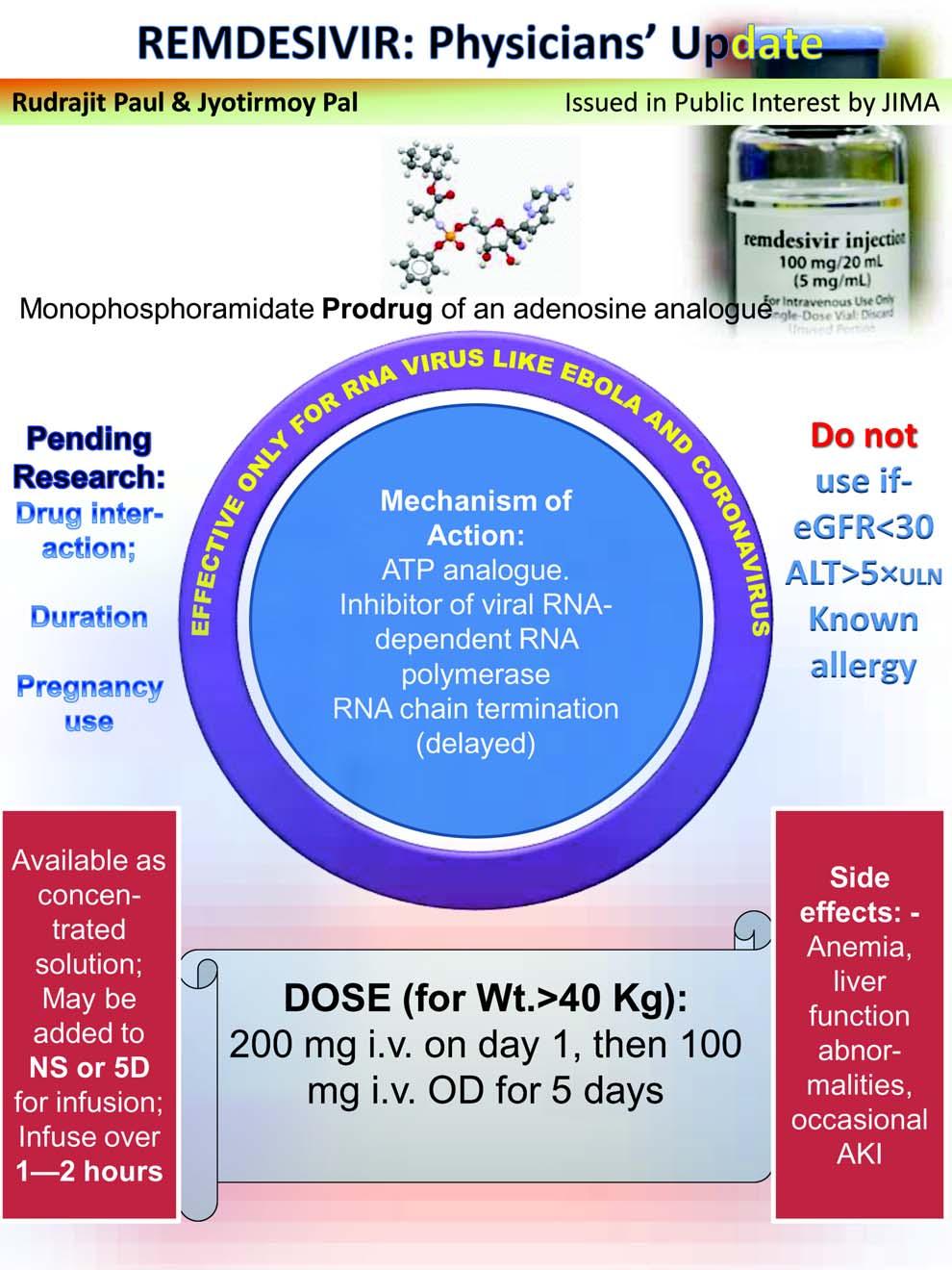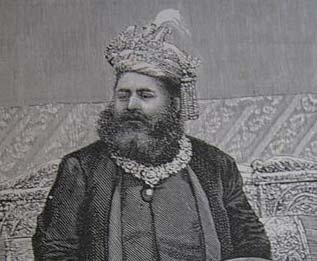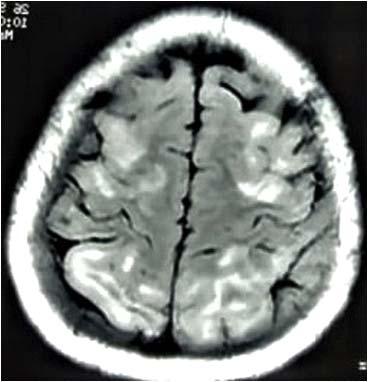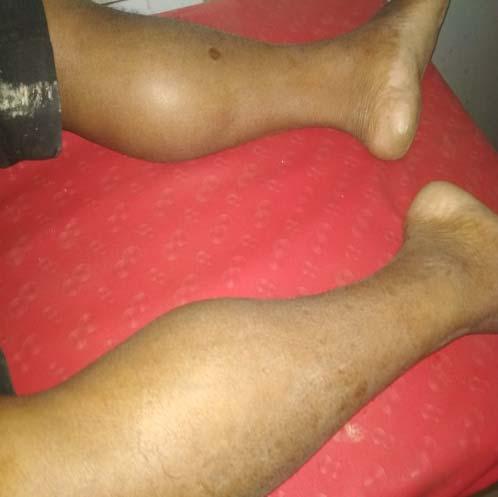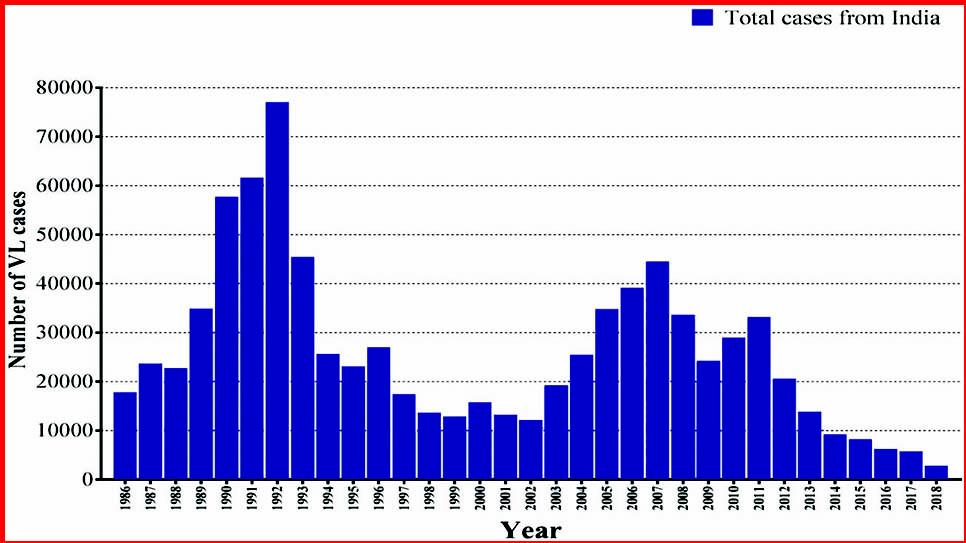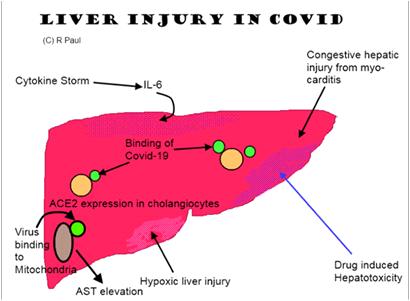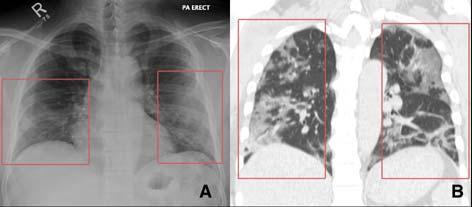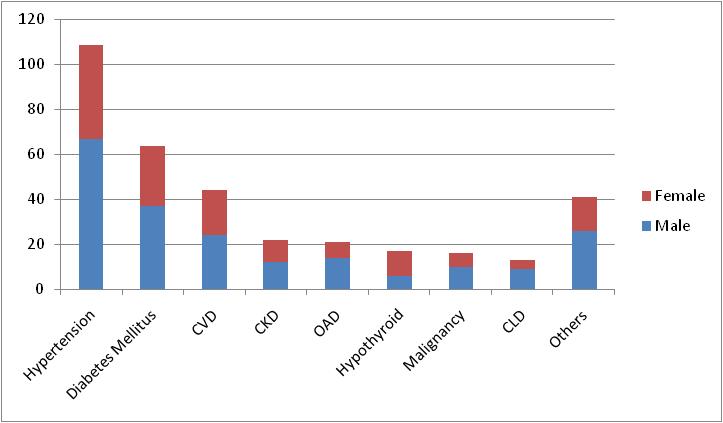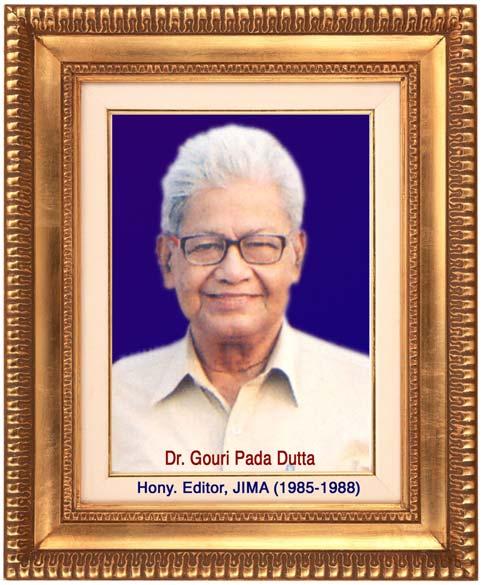JOURNAL OF THE INDIAN MEDICAL ASSOCIATION, VOL 118, NO 06, JUNE 2020
Medical History The Epidemic Diseases Act of India : What, Why and How? Rudrajit Paul
S
ince the Epidemic Diseases Act has been invoked in India during the current Covid-19 pandemic, all doctors should have some idea about this law and should know the historical perspective in which it was formulated. But first, the provisions of this law are quoted verbatim here.
or otherwise, and the segregation, in hospital, temporary accommodation or otherwise, of persons suspected by the inspecting officer of being infectedwith any such disease. 11* * * * * [2A. Powers of Central Government.—When the Central Government is satisfied that India or any part thereof is visited by, or threatened with, an outbreak of any dangerous epidemic disease and that the ordinary provisions of the law for the time being in force are insufficient to prevent the outbreak of such disease or the spread thereof, the Central Government may take measures and prescribe regulations for the inspection of any ship or vessel leaving or arriving at any port in 2 [the territories to which this Act extends] and for such detention thereof, or of any person intending to sail therein, or arriving thereby, as may be necessary.] 3. Penalty.—Any person disobeying any regulation or order made under this Act shall be deemed to have committed an offence punishable under section 188 of the Indian Penal Code (45 of 1860) (see below) 4. Protection to persons acting under Act.—No suit or other legal proceeding shall lie against any person for anything done or in good faith intended to be done under this Act.
THE EPIDEMIC DISEASES ACT, 1897 ACT NO. 3 OF 18971 [4th February, 1897.] An Act to provide for the better prevention of the spread of Dangerous Epidemic Diseases. WHEREAS it is expedient to provide for the better prevention of the spread of dangerous epidemic disease; It is hereby enacted as follows:— 1. Short title and extent.—(1) This Act may be called the Epidemic Diseases Act, 1897. 2[(2) It extends to the whole of India except 3[the territories which, immediately before the 1stNovember, 1956, were comprised in Part B States]] 4 5* * * * * 6 2.Power to take special measures and prescribe regulations as to dangerous epidemicdisease.—(1) When at any time the 7 [State Government] is satisfied that 7[the State] or any part thereof is visited by, or threatened with, an outbreak of any dangerous epidemic disease, the 8 [State Government], if 9 [it] thinks that the ordinary provisions of the law for the time being in force are insufficient for the purpose, may take, or require or empower any person to take, such measures and, by public notice, prescribe such temporary regulations to be observed by the public or by any person or class of persons as 9 [it] shall deem necessary to prevent the outbreak of such disease or the spread thereof, and may determine in what manner and by whom any expenses incurred (including compensation if any) shall be defrayed. (2) In particular and without prejudice to the generality of the foregoing provisions, the 7[State Government] may take measures and prescribe regulations for— 10* * * * * (b) The inspection of persons travelling by railway
[1. This Act has been amended in its application to— (1) the Punjab by the Epidemic Diseases (Punjab Amendment) Act, 1944 (Punjab Act 3 of 1944); in East Punjab by East Punjab Act 1 of 1947: (2) the C. P. and Berar by the C. P. and Berar Epidemic Diseases (Amendment) Act, 1945 (C. P. and Berar Act 4 of 1945). The Act has been extended to— (1) the whole of Madhya Pradesh by M.P. Act 23 of 1958 (when notified). (2) the transferred territories of Punjab by Punjab Act 8 of 1961. (3) in Dadra and Nagar Haveli (w.e.f. 1-7-1965) by Reg. 6 of 1963, s. 2 and Sch. (4) to Lakshadweep (w.e.f. 1-10-1967) : vide Reg. 8 of 1965, s. 3 and Sch. (5) Union territory of Pondicherry by Act 26 of 1968, s. 3 and Sch. The Act has been repealed in its application to Bellary District by Mysore Act 14 of 1955. 2. Subs. by the A.0. 1950. 3. Subs. by the Adaptation of Laws (No. 2) Order, 1956 for
73
